
We hear of increasingly more applications of Artificial Intelligence ranging from improved medical diagnosis to autonomous vehicles to automatic translation to voice recognition. But when we look at the companies behind the development or use of those applications, we mostly see large companies, and a few technological start-ups. Most AI applications are currently developed or used by GAFAM[1], BAT[2] or the top 50 of national large enterprises listed on the international or national stock exchange. Think about the best facial recognition programs that are currently provided as a service by Amazon, Google and Microsoft. Most of those services are used by large organizations, both private and public. But what about the use of advanced AI technology for small and medium enterprises (SMEs), representing often the large majority of the economy, at least in terms of employees?
AI in Spanish SMEs
In this post, I describe AI in Spanish SMEs, dealing with questions such as:
- are SMEs aware of AI?
- Do they know what it is useful for?
- Are they aware of the risks?
- Do they have access to the right skills?
- What about usage in different sectors?
I have the honour to teach an AI class to more than 250 Spanish SMEs in the context of the DigitalXBorder program, an ambitious program to help SMEs in their digital transformation with participation of experts from Google, eBay, Amazon, Telefonica, Salesforce, Microsoft, etc, etc. AI is one of the around 25 topics of the course. The course takes place in more than 25 cities in Spain with about 30 SMEs participating in each city over the course of three years.
The AI course consists of a bit of history and definitions of AI along with emblematic examples (General Problem Solver, ELIZA, the Turing Test), enterprise AI examples, ethical challenges, and what this all means or can mean for SMEs, who usually have less data, less budget and little access to the right skills. The course ends with practical examples of Machine Learning as a Service, allowing any SME to do Machine Learning on their own data sets within minutes or hours.
At the start of the program, I designed a simple questionnaire to get a better understanding of the state of play of AI in SMEs. Now that the first year of the course is over, I analyse the initial findings covering 7 cities and more than 50 SMEs. This is of course a small sample, so the interpretation is more qualitative than quantitative.
Questionnaire results
Following are some of the results. Except for one, all SMEs have heard of AI. Asked about what SMEs do understand by AI, the answers are not surprising. Machine Learning and intelligent software are at the top, followed by “thinking machines” and robots. A significant part also considers that AI can refer to all of the above (see Figure 1).
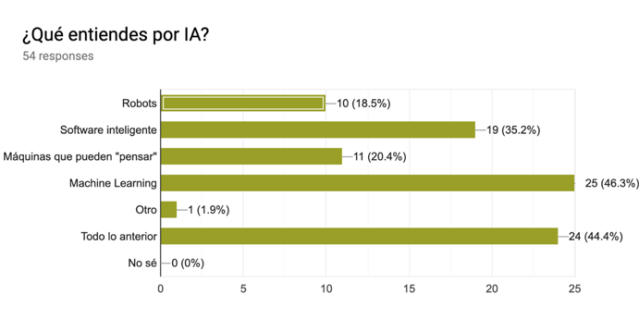
About 80% of the participants know about some AI use cases. And 75% is aware of the risks associated with this technology (bias, undesired discrimination, explainability, future of work). The large majority, however, believes that the opportunities significantly outweigh the risks (Figure 2).
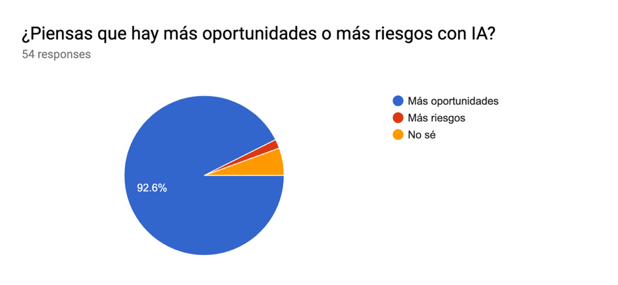
Most SMEs think that AI is already here, but that much more is to come. No one thinks that AI is only something of the future (Figure 3).
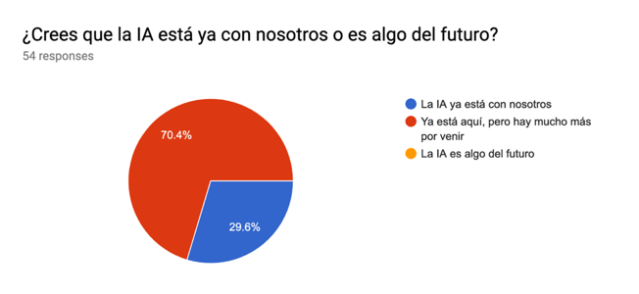
However, the main challenges that SMEs face is to have access to the required technical skills such as data engineering, analytics and machine learning. More than 75% of the SMEs do not have access to the right knowledge (Figure 4). Obviously, that hinders the uptake of AI.
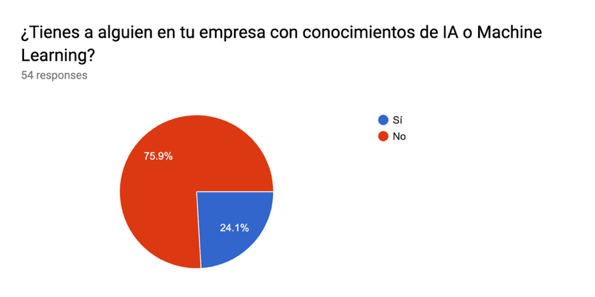
Asking whether SMEs are actually using AI, about 30% state that they are. Almost 60% has plans to use it, and only a bit more than 10% has currently no plans to use it (Figure 5).
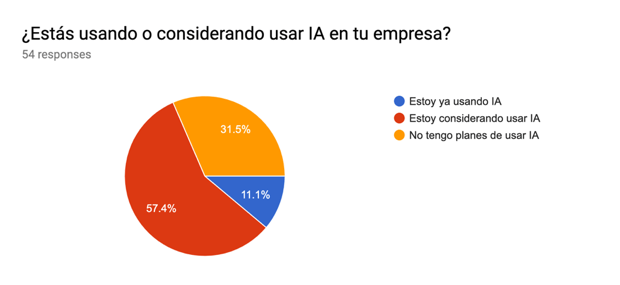
When asked what problems they solve or plan to solve with AI applications, usual applications were reported like improving sales, market understanding, predictive maintenance, machine design, etc.
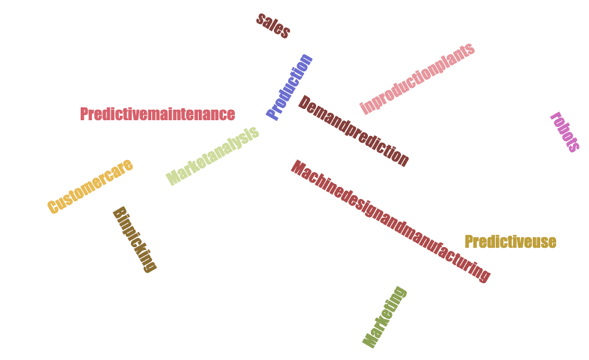
Given the large variety of sectors where SMEs are active, a broad categorization has been used including services, technology, industry, consumer, food & agriculture, but almost 50% is from the industrial sector.

Conclusions
In summary, we can see that there is high awareness of Artificial Intelligence in SMEs in Spain; several uses cases are known; and over 70% are implementing AI or planning to do so. But we also learned that the main challenge is to have access to the required AI skills such as Machine Learning, or even simpler “analytics” skills. This does not mean, however, that SMEs cannot start using AI. There are increasingly more tools available that offer Machine Learning as a Service through intuitive graphical interfaces, allowing non-data scientist to apply, evaluate and execute Machine Learning models directly on excels with data from the SMEs.
As with many new technologies, first applications are pioneered by innovative early adopter enterprises. But when solutions are becoming more mature and automated, they come within reach of smaller organizations. This is the “normal” democratization process of new technology, and it will be no different with AI, which is reaching increasingly more SMEs.
If you prefer to read this post in Spanish, you can find it here:
To keep up to date with LUCA visit our website, subscribe to LUCA Data Speaks or follow us on Twitter, LinkedIn or YouTube .
[1] Google, Amazon, Facebook, Apple, Microsoft
[2] Baidu, Alibaba, Tencent
The post Artificial Intelligence in small and medium-sized enterprises appeared first on Think Big.